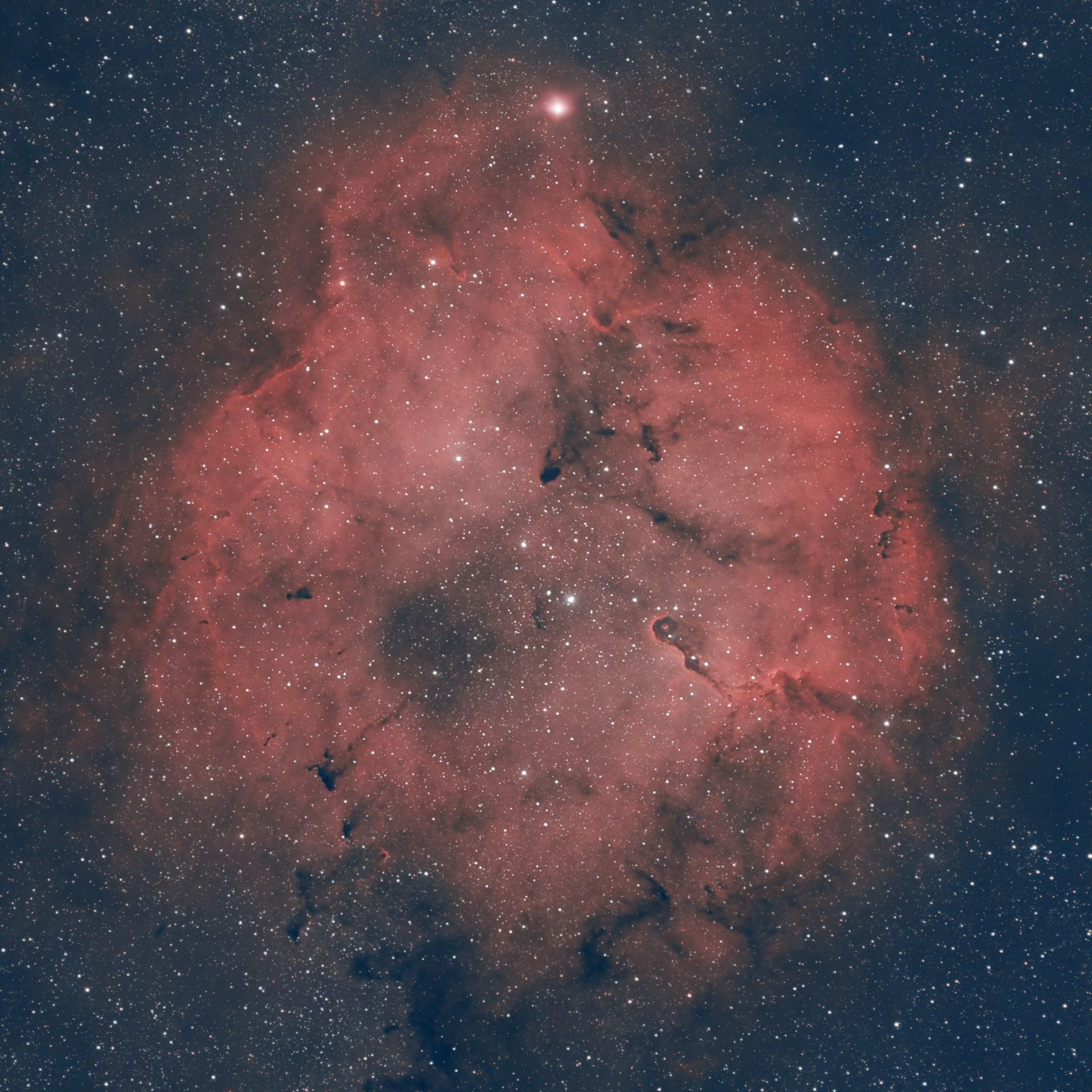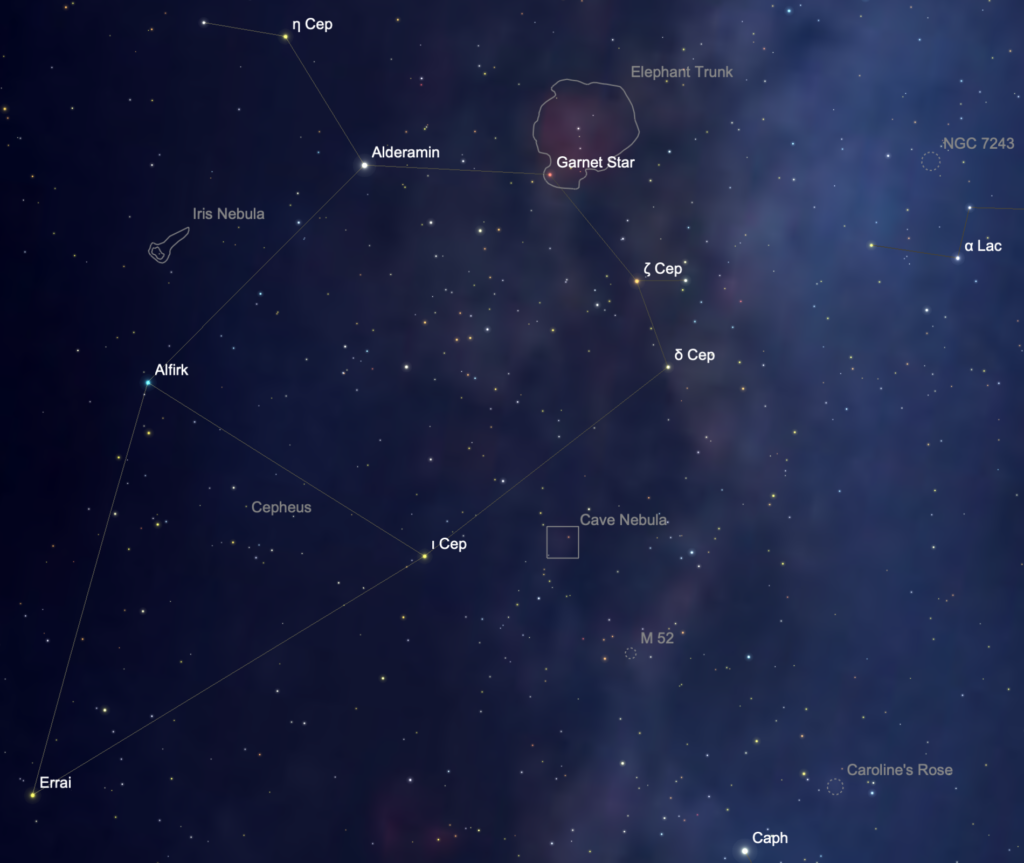
Cepheus, the King, is an ancient and rather dim constellation, but its position along the northern Milky Way means it harbors more than its share of deep-sky sights including star clusters, nebulae, even the lovely Fireworks galaxy (NGC 6946). But the best field of view in the constellation encompasses three deep-sky sights including a star-forming nebula, a star cluster, and an aging red supergiant that’s one of the reddest and most luminous stars in the sky.
This vista is organized around the star cluster Trumpler 37. Visible in dark sky as a misty patch at the bottom of the ‘crooked house’ that makes up the outline of the constellation, it spans about three full-moon diameters. One of the youngest known clusters in the galaxy, Trumpler 37 formed just 3 million years ago and contains more than 400 stars. In a telescope, visually, this sprawling arrangement of stars looks a little like a four-leafed clover. It’s quite a pleasing sight in a pair of binoculars or small wide-field telescope.

New star clusters often overlap with residual hydrogen gas and dust from which they formed and Trumpler 37 is no exception. While extremely difficult to see visually, the complex and colorful nebula IC 1396 envelops the cluster and makes for an excellent target for astrophotographers. The roughly circular nebula spans about three degrees – about six full-moon diameters. The vast cloud of hydrogen that makes up IC 1396 gains its energy from the powerful O-type star HD 206267 near the geometric center of the nebula. Bright knots of glowing gas fleck the nebula, and images reveal inky-dark globules of dust where new stars form and continue to add to the ranks of the cluster. The most striking knot, the Elephant Trunk, looks like a long finger of darkness with a bright rim where the radiation from bright new stars collides with cold gas. The structure spans about 20 light years. The Elephant Trunk is also included as vdB 142 in Canadian astronomer Sidney van den Bergh’s catalog of some 500 nebula.

At the northern edge of the nebula lies the 4th-magnitude star Mu Cephei. The star is not physically associated with the nebula or cluster: it lies at a distance of about 3,000 light years, about 500 light years further away than IC 1396. Mu Cephei is one of the brightest and largest known stars in the Milky Way, an evolved red supergiant that’s ballooned to a size such that it would swallow Jupiter if it were at the center of our solar system. It shines with a brightness of 269,000 suns. Mu Cephei makes for an excellent target in binoculars and a telescope. It’s the reddest star you can see in the night sky without optical aid. William Herschel, observing the star in the 18th century, said it was of “a very fine deep garnet colour”, so it’s often called “Herschel’s Garnet Star”.
Mu Cep is nearing is demise, but it still has some excitement ahead. As it burns through ever-heavier elements in its core, it will evolve from a red supergiant back to a blue supergiant (with a hotter surface temperature), then to an erratic Wolf-Rayet star that ejects its outer layers in the form of hydrogen, carbon, and molecules such as CO, H20, and SiO. At last, in many thousands of years, it will detonate as a spectacular supernova easily visible in Earth’s daytime skies. The star’s core will likely collapse to a black hole and leave behind another nebula, a supernova remnant that may enchant stargazers in Earth’s distant future.
Share This: